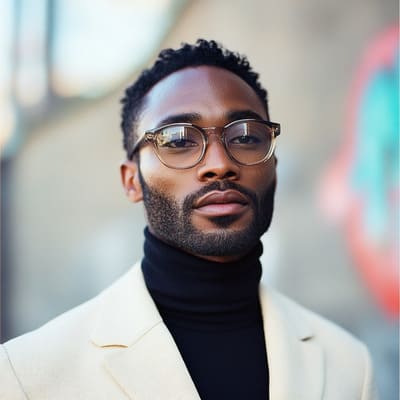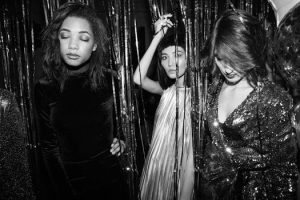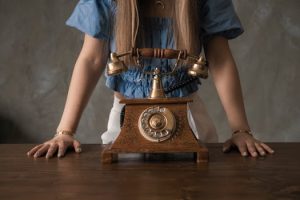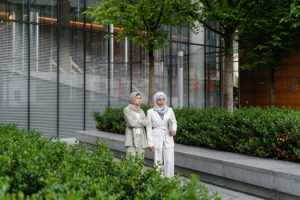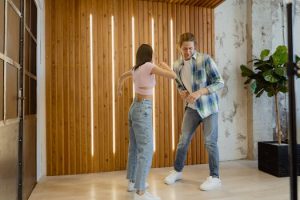The Evolution of Men’s Formal Wear
Since the dawn of civilization, human beings have been using clothing as a means to express themselves, convey a message, or portray a certain status in society. And when it comes to formal wear, men have always been expected to dress in a certain way, adhering to traditional dress codes and societal norms. However, the evolution of men’s formal wear has undergone numerous changes, reflecting the evolving attitudes towards so-called “appropriate” attire. From the classic tailcoat to the modern tailored suit, let’s take a look at the ever-changing history of men’s formal wear.
The Birth of Formal Wear
Formal wear for men can be traced back to the 17th century, where courtiers and aristocrats were expected to dress in extravagant garments to distinguish themselves from the commoners. These garments included elaborate and brightly colored coats, knee-length breeches, and powdered wigs. However, it was not until the 19th century, during the Victorian era, that the modern concept of formal wear began to take shape.
The Rise of the Tailcoat
During the 19th century, the tailcoat, also known as “morning coat”, became the standard formal attire for men. This knee-length coat was typically made of dark-colored wool and featured a single button closure, long tails at the back, and a curved front. It was worn with a waistcoat, a white shirt, and a necktie, along with dress shoes and a top hat. The tailcoat was primarily worn for daytime formal events, such as weddings, funerals, and business meetings.
The Birth of the Tuxedo
In the late 1800s, the tailcoat began to lose its popularity, and a new formal attire emerged – the tuxedo. It is believed that the tuxedo was first introduced by a wealthy tobacco plantation owner, James Brown Potter, who brought it back to the US from a trip to England. The tuxedo was essentially a less formal version of the tailcoat, with a shorter length and no tails at the back. It was typically worn with a white shirt, a bow tie, and a cummerbund for formal evening events.
The Golden Age of the Suit
In the early 20th century, the tuxedo became the go-to formal wear for men, while the tailcoat was reserved for ultra-formal occasions only. But by the 1920s, the suit, as we know it today, had also made its mark. The modern tailored suit, consisting of a matching jacket and pants, became the new symbol of formal wear for men. It was more practical, versatile, and convenient for everyday wear, compared to the more elaborate and cumbersome tailcoat or tuxedo.
The Revolution of Men’s Formal Wear
As the world underwent major social and cultural changes during the mid-20th century, so did men’s formal wear. The suit, which was once considered a symbol of prestige and traditionalism, was now being revolutionized and modernized. With the rise of youth culture, the suit began to take on a more casual, relaxed look, with new fabrics, colors, and styles being introduced.
Casual is the New Formal
In the 1960s, the iconic “mod suit” was born, featuring a slim-fit, shorter jacket, and tapered pants. This style was popularized by music icons such as The Beatles and The Rolling Stones and became a symbol of rebellious youth culture. In the 1970s, the leisure suit, a more casual and comfortable suit made of polyester, gained popularity among working-class individuals and gained popularity in the business world.
Modern Day Formal Wear
Today, formal wear for men has come a long way from its aristocratic origins and strict dress codes. With the rise of gender fluidity and inclusivity, the traditional idea of “men’s formal wear” has evolved to include a wide range of options. While the classic suit and tuxedo are still widely worn for formal occasions, there is now a growing trend of unconventional and non-traditional formal wear, such as colored suits, jumpsuits, and even kilts.
The Future of Men’s Formal Wear
The future of men’s formal wear is unpredictable and ever-changing. With the rise of sustainable fashion and the growing trend of gender-neutral clothing, we may see a shift towards more eco-friendly and inclusive options in the world of formal wear. However, one thing is for sure – men’s formal wear will continue to evolve and adapt to reflect the changing attitudes and beliefs of society.
In conclusion, the evolution of men’s formal wear reflects the changes in society and culture throughout history. From the extravagant tailcoats to the modern-day suits, formal wear for men has gone through many transformations, symbolizing the ever-changing attitudes towards fashion and self-expression. As we move forward, one thing is certain – men’s formal wear will never stop evolving, and it will continue to be a reflection of our society’s values and beliefs.

